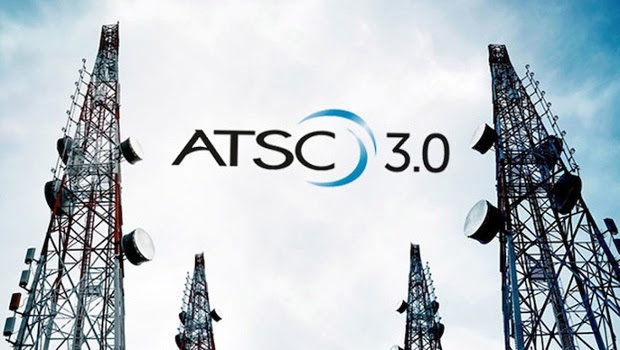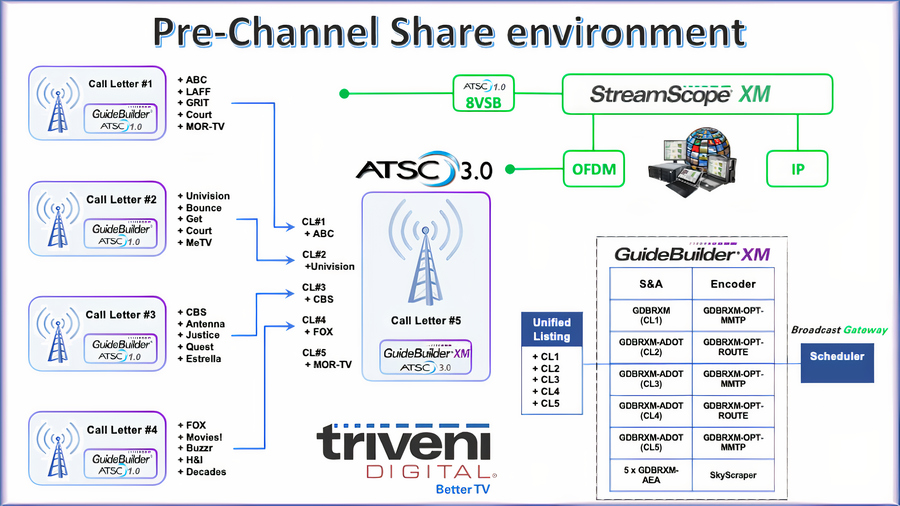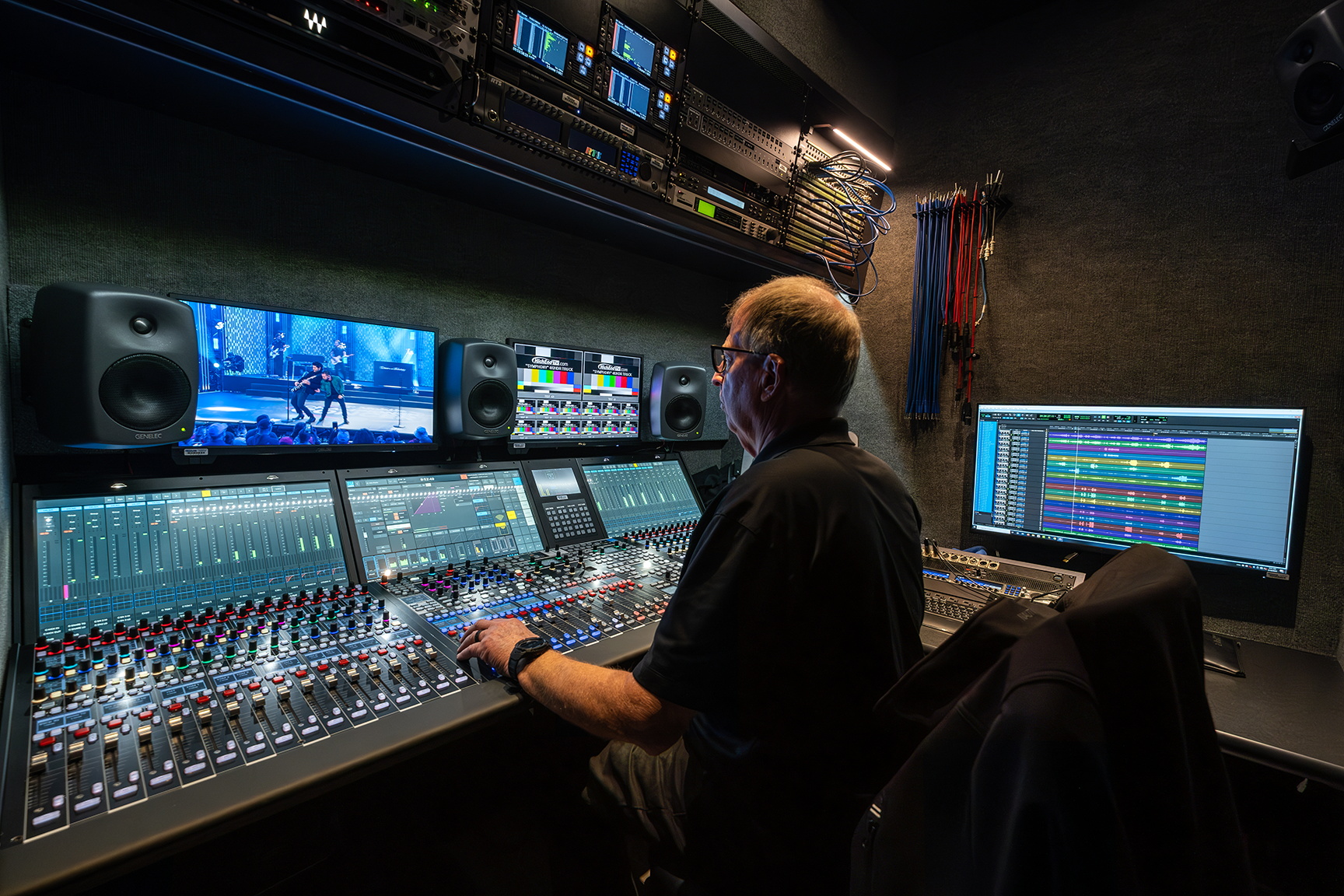Notes from the Front Line: Practical Problems and Solutions for Broadcasters in the ATSC 3.0 Era
The ATSC 3.0 environment is infinitely more complex than ATSC 1.0, but the result is highly rewarding

Broadcasters in the U.S. are rapidly migrating from ATSC 1.0 to NextGen TV. With ATSC 3.0, broadcasters have the ability to transform the television experience, offering better reception, higher quality video and audio, interactivity, innovative service guides, datacasting and a host of other exciting new features to viewers and business partners.
However, the transition to ATSC 3.0 is complex, especially concerning the intricacies of channel sharing agreements. Stations in a local market must work together to determine the details of service level agreements, network clearances, hosting agreements and more. Once the legalities are agreed upon, there are still several challenges broadcasters face from a technical standpoint.
As a leading provider of ATSC 3.0 solutions, with a comprehensive understanding of the ATSC 3.0 environment and extensive real-world deployment expertise, Triveni Digital has gained significant practical experience in NextGen TV. Let’s look at the essentials of ATSC 3.0 deployments and key discussions that need to take place in a channel sharing environment.
EXAMINE INTERMARKET DISTRIBUTION VARIABLES
An important conversation that needs to take place between TV stations is who does what. Stations need to decide who will distribute what programs within the designated market area (DMA) and in what quality before they can proceed with delivering NextGen TV. This is essential for establishing Service Level Agreements (SLAs), bandwidth utilization, rating measurement and translation tools. It’s common for one station to act as host and receive downstream information from other stations. Beyond choosing the host station, determining the intermarket distribution variables can be challenging for various reasons.
One issue is bandwidth limitations. A common scenario is for station A to have a subchannel that will be distributed by station B. This begs the question whether station B has enough bandwidth to distribute the subchannel and at what quality of service. Will the subchannel be available in HD? Will it be 720p or 1080p?
The conversation might then evolve into how to get programs from one station to another. A reliable communication such as fiber link or microwave is recommended. If the stations are not already connected, they could utilize an internet service provider to transport uncompressed audio and video over the network from point A to point B.
CHECK TRANSMISSION READINESS

In a channel-sharing environment, it’s critical to ensure the transmitter is ATSC 3.0-ready. While some stations may have already upgraded their transmitters during the repack, it’s still necessary to check with transmitter and exciter vendors to confirm licenses are up to date for ATSC 3.0 service delivery. If this step is forgotten during the preparation time frame, the launch of ATSC 3.0 services could be delayed.
During this phase, broadcasters should also test whether facilities are equipped to handle the power levels required for ATSC 3.0 transmissions. A common situation is for a low-power broadcaster to become an ATSC 3.0 host station. To extend their reach to more households, the station must increase its transmitter power.
CONFIGURE THE ATSC 3.0 BROADCAST CHAIN
Correctly installing and configuring the ATSC 3.0 broadcast chain is another essential step. The ATSC 3.0 broadcast chain comprises a wide range of equipment, including an ATSC 3.0 transport stream encoder, video/audio encoders, packagers and a broadcast gateway/scheduler. It’s important during setup to deploy a broadcast stream analyzer, stream verification software and more. In the deployment phase, an end-to-end service monitoring solution is needed.
Configuring the ATSC 3.0 broadcast chain is important to ensure that ATSC 3.0 delivery components, such as multisubframe and multi-PLP delivery, as well as interactivity, work smoothly. Here are a few tips for configuring the ATSC 3.0 broadcast chain:
- ATSC 3.0 stations should define the number of services within the MODCOD (modulation and coding). This involves configuring the broadcast chain to ensure RF is optimized for each transmission.
- Consider that there are multiple physical layer pipes (PLPs) in an ATSC 3.0 channel sharing environment. Some broadcasters may want to handle their own PLP to maintain control over their broadcast, which needs to be defined. Additionally, stations may want to create a second PLP to use in a more robust (i.e., mobile) environment in the future. This should be outlined clearly between all of the channel sharing stations to guarantee optimal bandwidth use.
- Furthermore, stations must examine their PSIP generators and configuration. By moving ATSC 1.0 programs to other ATSC 1.0 lighthouses, PSIP configuration changes are needed, and additional PSIP licenses might be necessary. To move one program from station A to B, PSIP needs to be modified.
- It’s up to each station to decide if they want to implement content security or signing. Those stations that choose to implement content security and signing have to perform a test with an encryption company and the ATSC 3.0 broadcast chain provider to ensure it works smoothly and accurately.
- Another vital question for stations to ask is whether they want to support optional broadcast applications, such as virtualization or interactivity. When ATSC 3.0 is more commonly deployed, these applications will allow stations to fully personalize and brand their broadcast transmission.
- Lastly, to optimize bandwidth usage, utilizing an encoder and packager that supports statistical multiplexing, in coordination with the transport stream encoder, may be advantageous in the transition phase. As stations add more services, subchannels and data delivery in the future, statmux will continue to be essential for boosting bandwidth utilization efficiency.
TEST SYNCHRONIZATION AND TIMING
Synchronization and timing are imperative in the ATSC 3.0 environment since the entire workflow is IP-based. There are many stations that currently rely on GPS. However, GPS isn’t effective if the equipment is running in the cloud. Even a slight difference between the two clock references can cause the lip sync or EPG timing to be off, resulting in service degradation. To confirm the broadcast gateway and exciter are in sync, stations need an accurate clock reference. An NTP or PTP external synchronization reference will avoid timing issues that can affect service quality.
CONCLUSION
The final step for ATSC 3.0 channel sharing stations is to test ATSC 3.0 service delivery. At least one of the stations involved in a channel-sharing agreement should have an ATSC 3.0 broadcast stream analyzer to monitor the real-time behavior of ATSC 3.0 service delivery, as well as verify that broadcast applications are showing up properly.
The ATSC 3.0 environment is infinitely more complex than ATSC 1.0, but the result is highly rewarding: ATSC 3.0 stations can support innovative service guides, addressable content delivery, interactive program enhancements and data broadcast applications. By partnering with a technology provider that offers interoperability with third-party technology vendors and experience in NextGen TV deployments, stations can streamline the transition and start delivering better TV.
Ralph Bachofen is vice president of sales and marketing at Triveni Digital.
Get the TV Tech Newsletter
The professional video industry's #1 source for news, trends and product and tech information. Sign up below.
